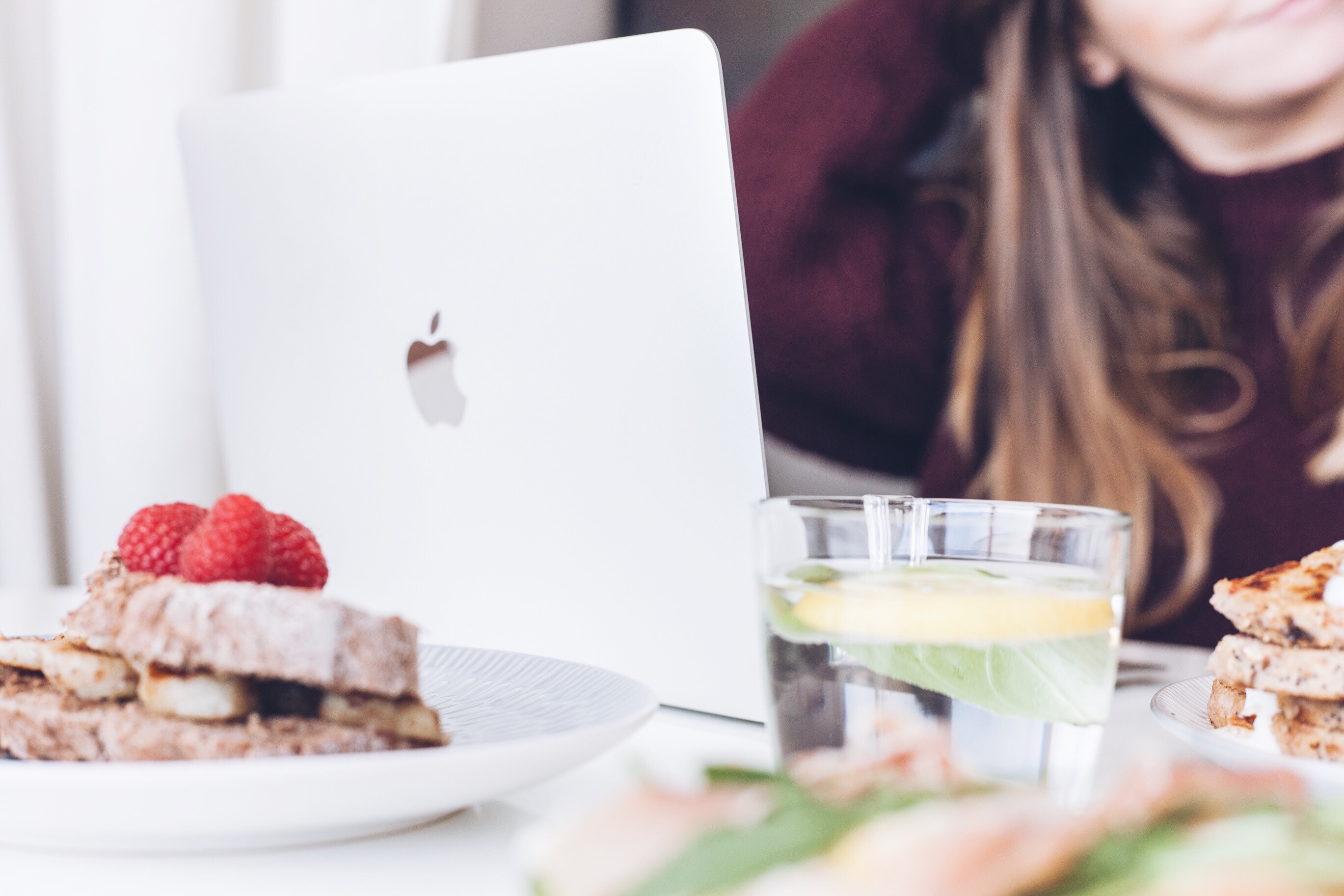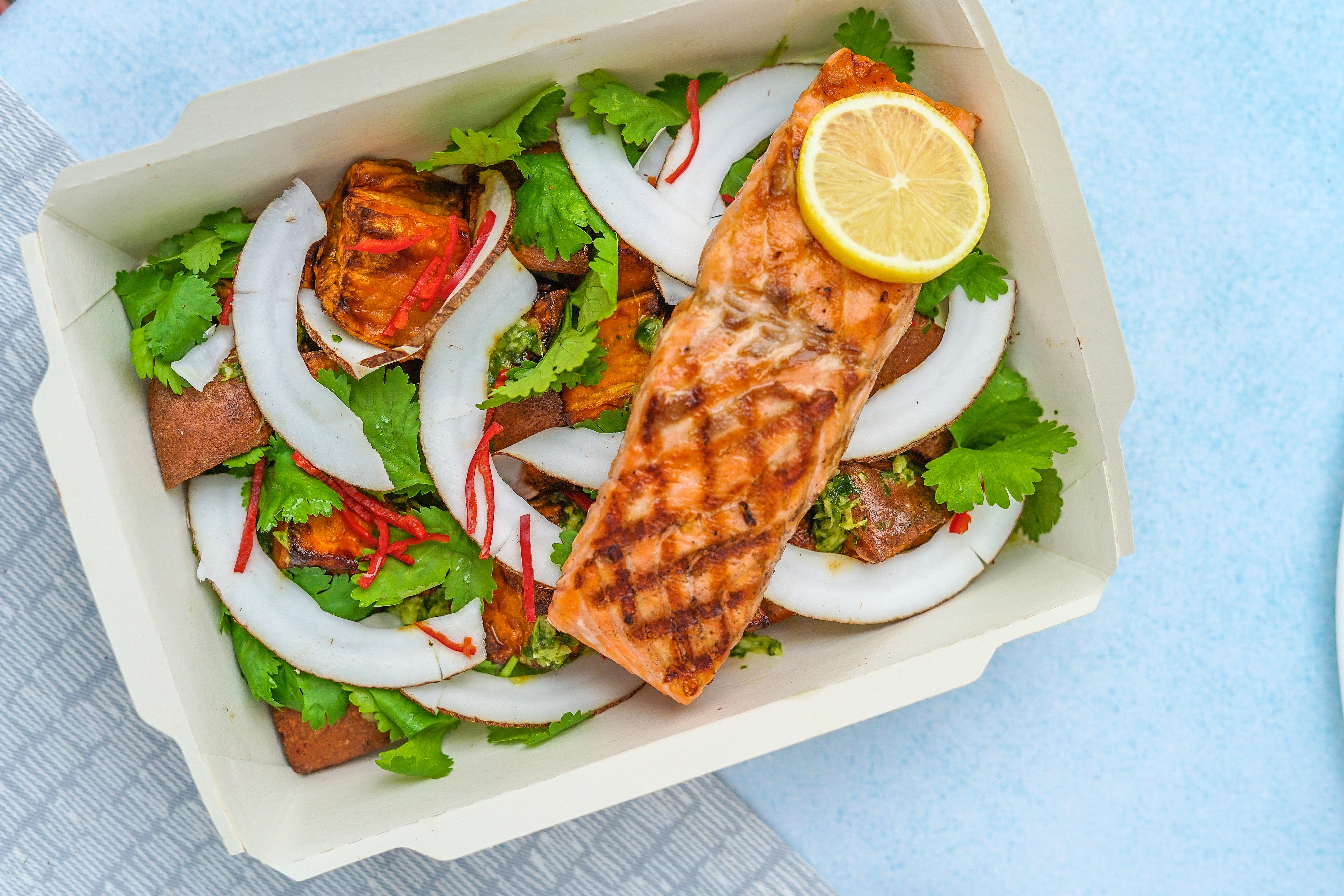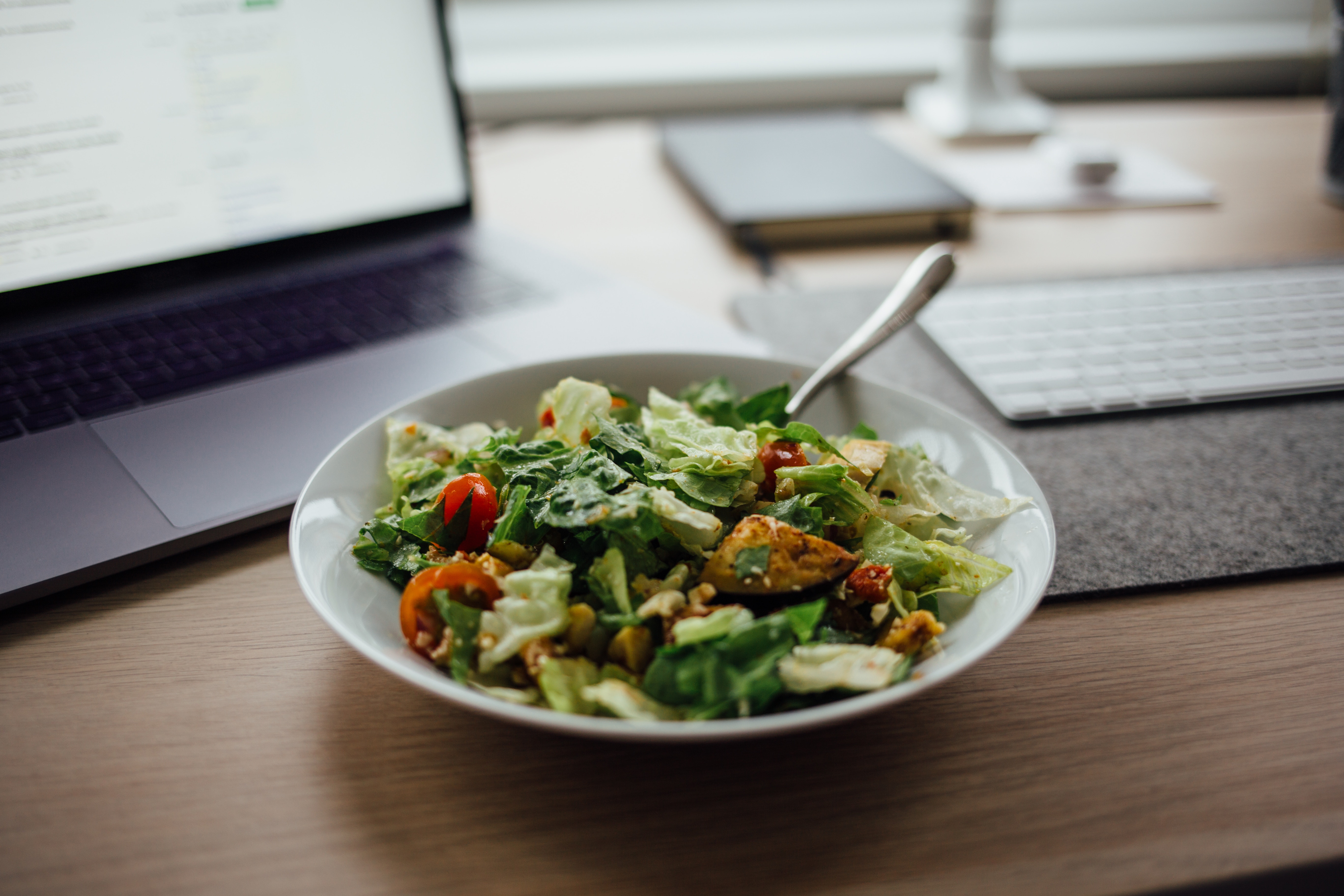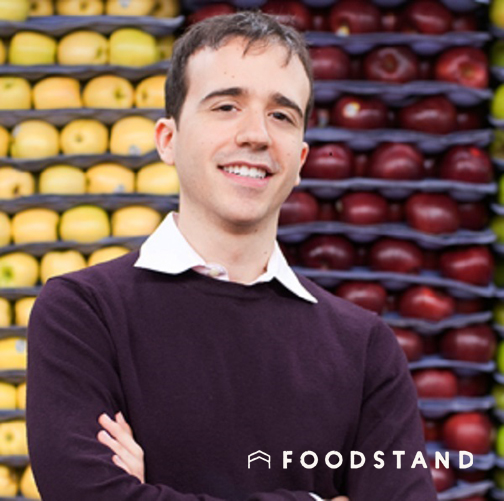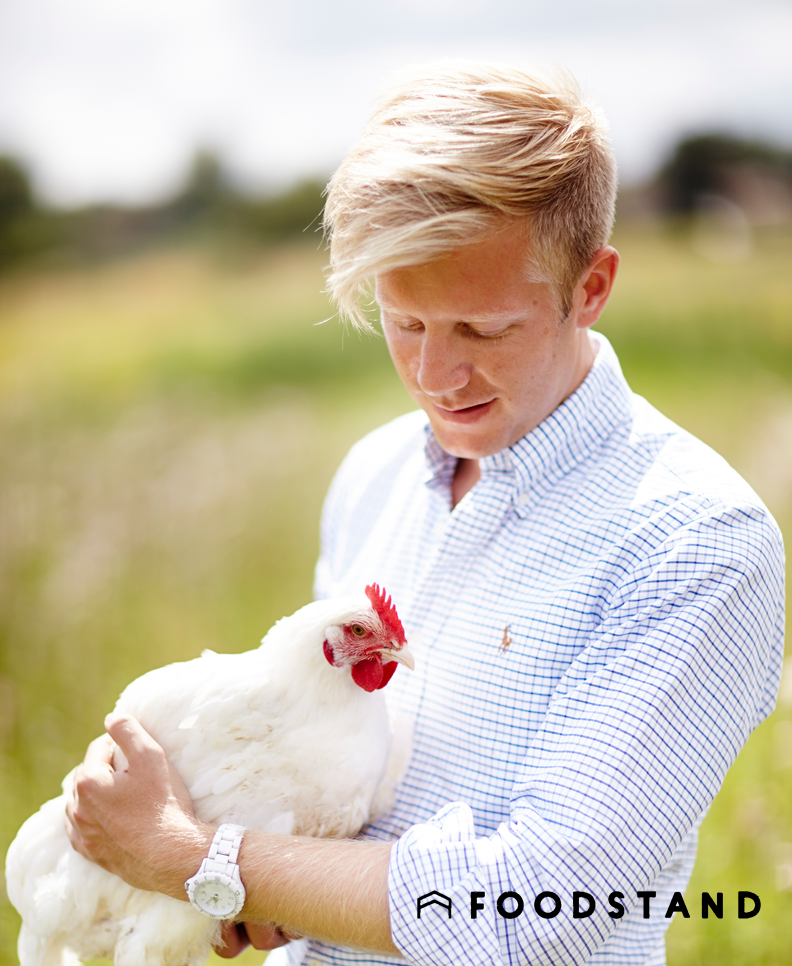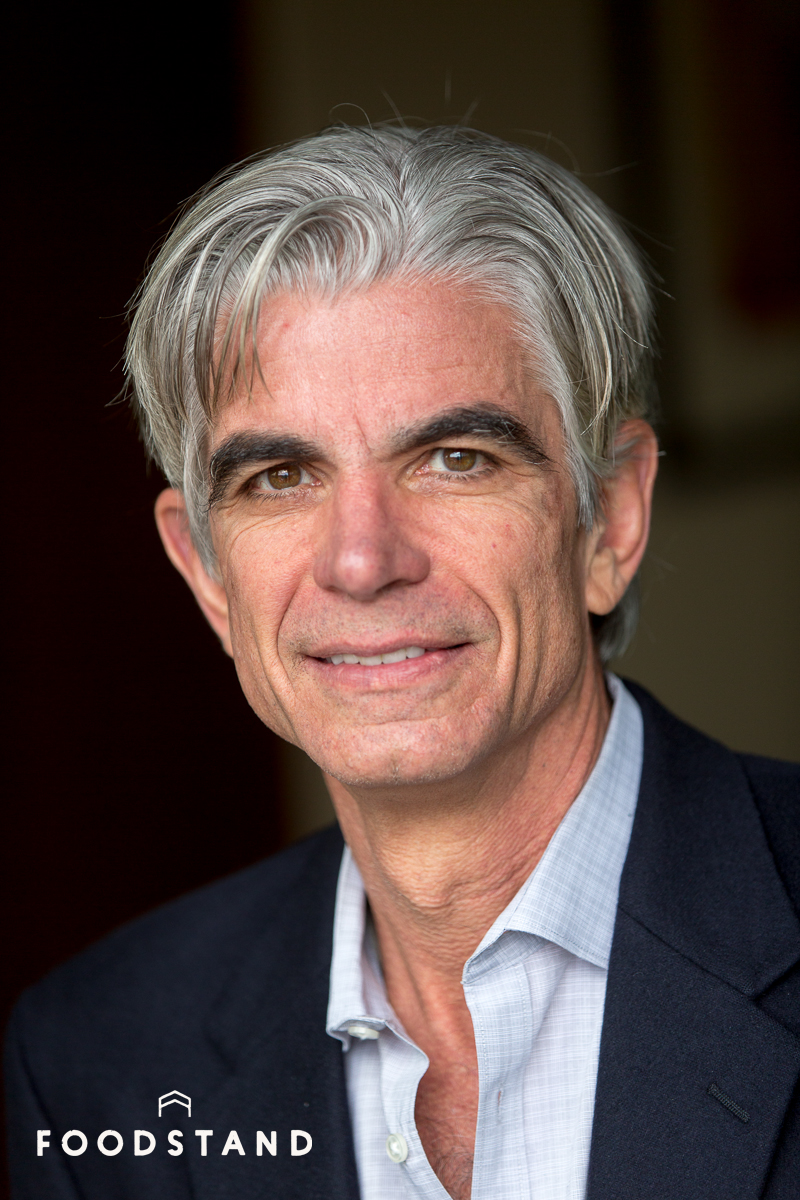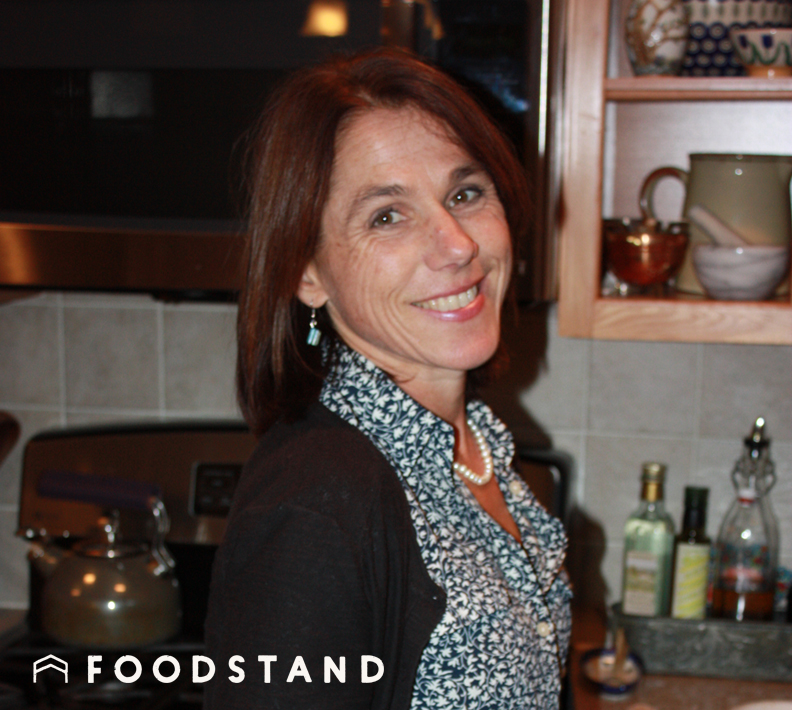
Becky Ramsing, MPH, RDN is a Senior Program Officer with the Center for a Livable Future at the Johns Hopkins Bloomberg School of Public Health. Her work and interests cover the food system as a whole—from nutrition and public health, to farming and the environment, and have taken her all over the world.
Please tell us about Center for a Livable Future and your role.
The Johns Hopkins Center for a Livable Future works with students, educators, researchers, policymakers, advocacy organizations and communities to build a healthier, more equitable, and resilient food system. Our work is driven by the concept that public health, diet, food production and the environment are deeply interrelated and that understanding these relationships is crucial in pursuing a livable future.
I work with the Food Communities and Public Health program. I primarily oversee CLF’s role as science and technical advisors to the Meatless Monday campaign.
You were instrumental in formulating Foodstand’s ‘Eat Less Meat’ Challenge. Why is eating less meat important?
Meat consumption is a part of our culture. Yet, there are consequences to eating excessive amounts of meat. First of all, health. Diets high in animal products, particularly red meat and processed meats, are associated with heart disease, diabetes, cancer and mortality. On the other hand, people who eat diets that are higher in vegetables and plant proteins generally have healthier weights and lower rates of diabetes, heart disease and other chronic diseases.
Then there is the environment. Producing meat (raising animals for meat) uses up disproportionate amounts of water, land and resources, compared to plant foods. It takes 5-8 times more water to produce a pound of beef compared to a pound of beans. Additionally, 30% of the arable land on the planet is used grow animal food and raise animals. Sadly, Amazon rainforests and other land valuable to the health of our planet are being destroyed for this cause. And, producing animals for meat generates large amounts of greenhouse gases–14.5% of all greenhouse gases globally in fact. The Paris Climate Deal outlines goals to limit growth in GHG’s to under 2%, yet even with major changes in energy, transportation and even farming practices, we can’t reach this goal unless we eat less meat.
Finally, producing the amount of meat people demand has caused a shift toward concentrated facilities in which animals are raised in crowded, dirty conditions that lead to contamination issues and also spur the over-use of medically important antibiotics.
Countries across the world are taking action on their nation’s food systems—for example, Brazil recently added the right to food to its constitution, and introduced enviable and comprehensive good eating guidelines that include everything from nutrition to sustainability. What efforts would you like to see the US take to help the American people eat better?
The U.S. needs to separate science from industry. The Guidelines should be based on the science of nutrition but also on health, climate, environment and animal welfare. Again it’s operating within a system rather than in a vacuum. Because ultimately, our health depends on a healthy and productive environment with clean water, healthy soil and breathable air. If we can’t produce and access quality food, our health will suffer.
How did you become interested in good eating?
I have been in the food and healthy eating field for nearly 30 years. I studied nutrition in college after deciding that it was a skill I could use to make lives better wherever I ended up. It has been a fun journey, especially since good food is often a part of it. During college I worked at a food magazine developing, testing and publishing recipes. While this was enjoyable, it was missing the connection of food and health, so after graduation I moved across the country for a dietetic internship. After training and working as a registered dietitian for several years in Boston, I moved to Tanzania (East Africa) to work with a relief and development agency. I ended up working with the national Nutrition Center focusing primarily on diabetes. Partnering with local health professionals, we developed a training project to help patients understand their disease and how they could eat to manage their blood sugar. Patient-centered care was a new concept for them, and it was exciting to see the nurses and docs realize that patients did better when they had a better understanding of their disease, which was especially important because of the lack of medication and blood testing supplies.
When we came back to the States, I went back to school to study public health (right here at Johns Hopkins) because I wanted to broaden my focus beyond nutrition. Since graduating in 1999 I have been involved in nutrition and health communication in the community, at the university level, in schools, work sites and with individuals. (I also spent another year in Uganda working with a local HIV/AIDs organization.) I have particularly enjoyed equipping families and teachers with the skills and knowledge they need to model and teach healthy eating habits, which most often includes hand on practice shopping and cooking.
Food systems became more alive to me while working with University of Maryland Extension. As I connected suburban residents with farms, children to the source of their food, and families to accessing and utilizing healthy foods, it was evident that the linkage to growing the food enhances the enjoyment and appreciation of food. It actually takes nutrition out of the main conversation and puts food in the forefront. I find that when people make a food decision based on wholeness, taste and quality, it is ultimately a healthier decision!
While at UMD, I helped start and manage a project in Afghanistan helping marginalized women grow food for their families and income and also take responsibility for the whole process—planning, obtaining resources, managing a garden, preserving and cooking, pricing and marketing. Women became leaders and problem solvers in the food security realm. We also worked with universities in Ethiopia doing similar projects. The program has grown and has now been highlighted by USDA, USAID and several media outlets.
So, coming to CLF has been a culmination of sorts. Here I can use knowledge, research and collaboration to educate about food and sustainability and to understand how to help people and their communities access fresh, healthy foods. This is especially important in the nutrition field. Registered dietitians are just now starting to understand that their recommendations are not in a vacuum. We need to think about the food we recommend, where it comes from, how it’s obtained, and how it fits in the larger food system.
What’s one piece of advice you can give to someone trying to develop better, long-term eating habits?
Try new foods. Learn to enjoy vegetables. Cook at home. (I know that’s 3!)
Is there any aspect of your diet that you’ve been trying to improve? If so, how have you been trying to improve it?
I’m a distance runner, so I try to balance pre and post workout food to optimize muscle recovery and synthesis. It’s become a lot more important as I’ve gotten older and more injury prone. I spread out my protein, making sure I get more in the morning and after long runs. I also try to get a lot of phytochemicals from colorful fruits and vegetables. And, I focus on getting nitrates from foods such as beets and arugula to help with oxygen efficiency.
My worst habit is snacking. I keep nuts on hand because they fill me up. I also make sure I am not thirsty. Often I find we snack when what we really want is a drink of water!
What’s always in your fridge to keep you on track?
Almonds are my go-to snack! I also keep peanut butter, good whole grain bread, plain yogurt, and frozen berries. And, of course, lots of vegetables! (I garden and belong to a CSA.) I often roast a bunch of vegetables and use them throughout the week in salads, with grains, or in other recipes. I keep sparkling water on hand for a calorie free drink while I’m cooking and wanting to snack (or drink a glass of wine!).
What’s your favorite meatless dinner party recipe?
Polenta with red pepper sauce and grilled vegetables.
How has studying nutrition in conjunction with agriculture changed the way you envision a healthy food system?
I envision a healthy food system as one in which we can grow and produce diverse, nutritionally optimal foods. It’s not only efficiency or growing staples such as grains, corn, soy; it’s producing a variety of nutrients from a variety of vegetables, fruits, and even a small amount of meat, dairy and fish! And producing foods in a way that optimizes nutrients and the health of the soil without harming the environment or using unsafe chemicals. I also don’t see food as a single unit, or just something to get at the grocery store. When I recommend a food, I look at the environmental impact, the ease of access, even the packaging and processing involved.
Good eating habits need to be developed from an early age, not only to set the foundation for habits one keeps as adults, but also to stop type 2 diabetes in its tracks. What do you think is the best way to educate our children about food?
Get them cooking and trying new foods from the beginning! Let them make choices (but have them decide between two good choices). Don’t be overly strict, but model good eating and expose them to many types of foods early. Move beyond “kid-friendly” food because there really is no such thing! Kids can eat what adults eat in smaller portions!
And remember, you are raising children to be healthy adults—don’t fret if it doesn’t come together when they are 8. You are teaching them habits for a lifetime and modeling the ability to learn and try new flavors. That’s more valuable than always eating the right thing!
You worked on projects in Afghanistan and Ethiopia focusing on nutrition and food security. What’s one thing that experience taught you?
Even people who are poor and lacking resources need to figure out how to solve problems and look for the resources they need. If you just give them things, it fosters a sense of dependency that backfires when assistance is gone. Often people just need encouragement and reassurance that they are doing a great job!
What’s your favorite lesser-known vegetable, and how do you eat/prepare it?
I like Kohlrabi. It’s nice with roasted vegetables or in a salad. Fennel is also great thinly sliced in a salad. Not lesser-known, but I love roasted beets in a salad, on greens and even in chocolate cake!
Favorite meatless proteins?
Beans and lentils–from our years living in Africa, my family loves beans and rice! They are great on a budget and super easy to make. Lentils are really quick—only 30 minutes, so I can make them when I get home from work and serve them with rice or bread.
How do you manage to eat well when traveling or on-the-go?
I bring my lunch to work and carry snacks as much as possible on trips. When staying in a hotel, I will go to a grocery store to get yogurt and fruit for breakfast—or some peanut butter and bread. Then I can justify a better dinner. I avoid fast food as much as possible. When eating out, I look for vegetarian options with lots of vegetables. Ethnic restaurants usually have good options. I’m really happy when I can find a restaurant that serves fresh, locally sourced foods.
What’s your favorite part about what you do?
As a registered dietitian, I have been able to do a whole variety of things, which has been really fun. Right now I’m enjoying taking science and communicating it to people who are making decisions—whether it’s a major policy, a program, or what to put on the table for dinner!
Good eating isn’t about perfection, it’s about habits and progress. From time to time we all eat something we don’t feel so great about later. What is your advice for those oops moments?
If you backtrack or eat something you don’t feel great about, just make the next meal better. Don’t try to punish yourself or make up for it, and don’t wait until tomorrow!
It’s not about perfection. It’s really about doing better. People get stuck when they think there’s only one right way to eat and then they don’t quite succeed. In fact, there are many ways you can obtain a healthy, balanced diet, and we have a lot of options here in the U.S. I find this is especially important for parents. If you are having trouble with family meals and manage to get a home cooked meal on the table twice in the week, that’s 2 days you didn’t go out! That’s progress!
Any parting words?
Eating less meat is not something people think about first when considering the environment or health, but reducing meat can open up so many new culinary possibilities and make a huge difference! I love that the food-world is catching on. Moving meat off the center of the plate has inspired some really delicious menus in restaurants, recipes, food blogs, etc. And it’s “icing on the cake” that it’s good for us and the planet!
